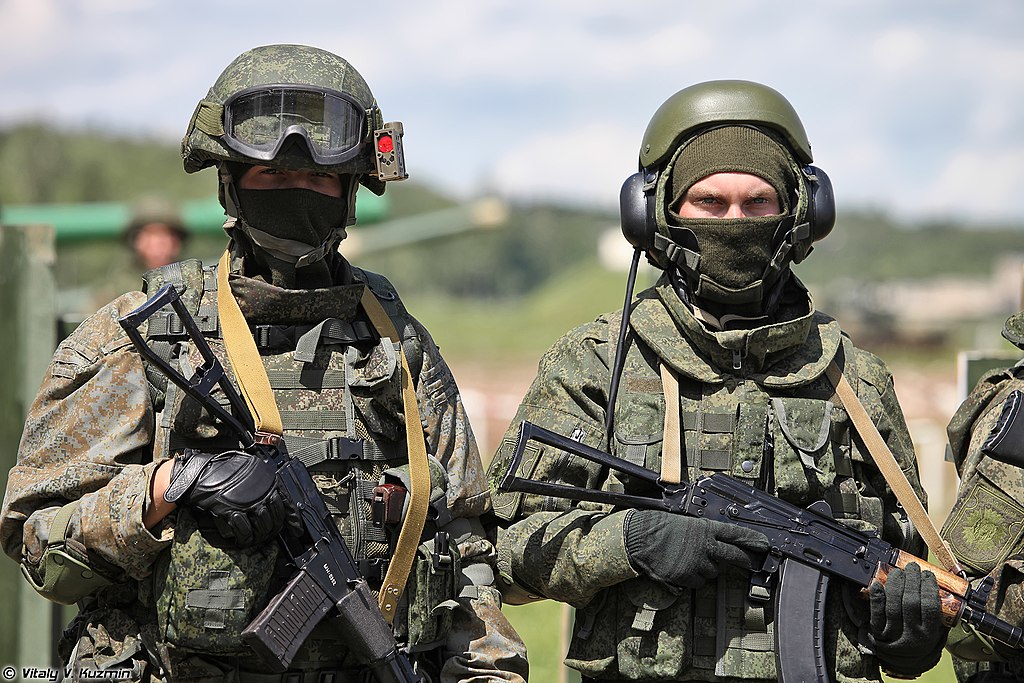“My son didn’t want to go to Ukraine,” said the mother of a Russian soldier from the Buryatia region near Lake Baikal, speaking on condition of anonymity. “He signed a military contract because our family is in debt and his fiancée is on maternity leave with a baby. At the end of December, he was sent ‘for exercises,’ as they told him officially. But for some reason they sent him for three months, although they announced the exercises would only last 10 days.”
For weeks, Russia has been concentrating military assets around Ukraine’s borders and in the occupied Ukrainian region of Crimea. On February 13, the United States increased its estimate of the number of Russian troops in the area from 100,000 to 130,000.
Nonetheless, Moscow has maintained that nothing untoward is going on and that Russia is merely conducting legitimate military exercises, both in neighboring Belarus and in the Black and Azov seas. Ukraine has been trying to force Russia to discuss the issue under the auspices of the Organization for Security and Cooperation in Europe (OSCE). Moscow responded on February 14 that “the Russian Federation declares that it is not carrying out any unusual military activity on its territory.”

‘Not An Exercise’
That’s not the assessment of Ruslan Leviyev, the founder of the nongovernmental Conflict Intelligence Team (CIT), which monitors open-source information to track the movements of the Russian military.
“This is definitely not an exercise,” Leviyev told RFE/RL. “There are many facts that contradict that idea.”
He notes that most of the Russian forces in Belarus, which far exceed the numbers sent for previous exercises, such as the Zapad-2021 joint exercises held in September 2021, are not located in the areas designated for the maneuvers now formally being held but are instead concentrated along Belarus’s border with Ukraine.
“This region is not on the schedule for the exercises, but some rather impressive forces have been placed there,” he said. “It is not just some sort of field camp for soldiers to be moved to the firing ranges. No, this is a forward camp for offensive equipment.”
CIT has also received numerous reports from Russian soldiers and their relatives confirming what the mother from Buryatia said — that the soldiers have been informed they will be away from their home bases for at least two months. Some have reportedly been told they will be away for as long as nine months.
“The exercises are only set to last 10 days,” Leviyev said of the current drills, which are scheduled to end on February 20. “Even the minimal time periods that soldiers have been told of do not match the official dates of the exercises.”
In comments to The Washington Post on February 11, military analyst Michael Kofman of CNA, a U.S.-based think tank based near Washington, noted that Russa has sent a lot of equipment to Belarus that is not normally sent for such exercises, including pontoon bridging units and “high-end electronic warfare” equipment.
“It’s unusual,” he concluded.

Leviyev added that the buildup of Russian forces in the regions of Russia adjacent to the Ukrainian border is also difficult to explain by the announced exercises.
“We see them in the Bryansk, Kursk, and Rostov regions and on the territory of the annexed Crimea region,” he said. “In all these locations there are troops and equipment, although the exercises are taking place in Belarus.”
‘Everything Is In Place’
Last week the Russian Defense Ministry issued a press release saying the units from the Western and Southern military districts were returning to their bases following an unscheduled readiness drill. Leviyev argued that this drill was not related directly to the buildup around Ukraine.
“The forces from the Western Military District that participated in the readiness drill moved entirely within their own district,” he said. “They did not leave the district and they did not concentrate near Ukraine…. They went to their usual firing ranges, conducted their training and returned to their bases. It was the same for the forces in the Southern Military District.”
CIT estimates that “nearly 70 percent of Russia’s military might” has been involved in the recent buildup.
“This is unprecedented,” Leviyev told RFE/RL. “We’ve never seen it before. And the process of moving forces, I would remind you, is still going on.”
In December, some analysts argued that a major attack did not seem to be in the cards because Russia had not mobilized the airborne forces that they expected to see in the vanguard of an offensive. In addition, they said, if Moscow was planning a major assault, it would mobilize medical units and field hospitals. Both of these mobilizations, Leviyev said, have taken place since the beginning of the year.
“Everything is in place,” he said. “Everything that you would need to start a war is now on the border.”
This doesn’t mean, he cautioned, that war is inevitable. It is possible that the Kremlin “simply wants to create the most believable situation possible that an invasion is being prepared so that others will really believe it is coming.”
“But by doing so, they are moving forces to the very border and that is creating an explosive situation,” Leviyev said. “Any insignificant incident could turn all their plans upside down.”
“Everything could blow up and there would be a war,” he added. “That is why it is impossible to predict.”


